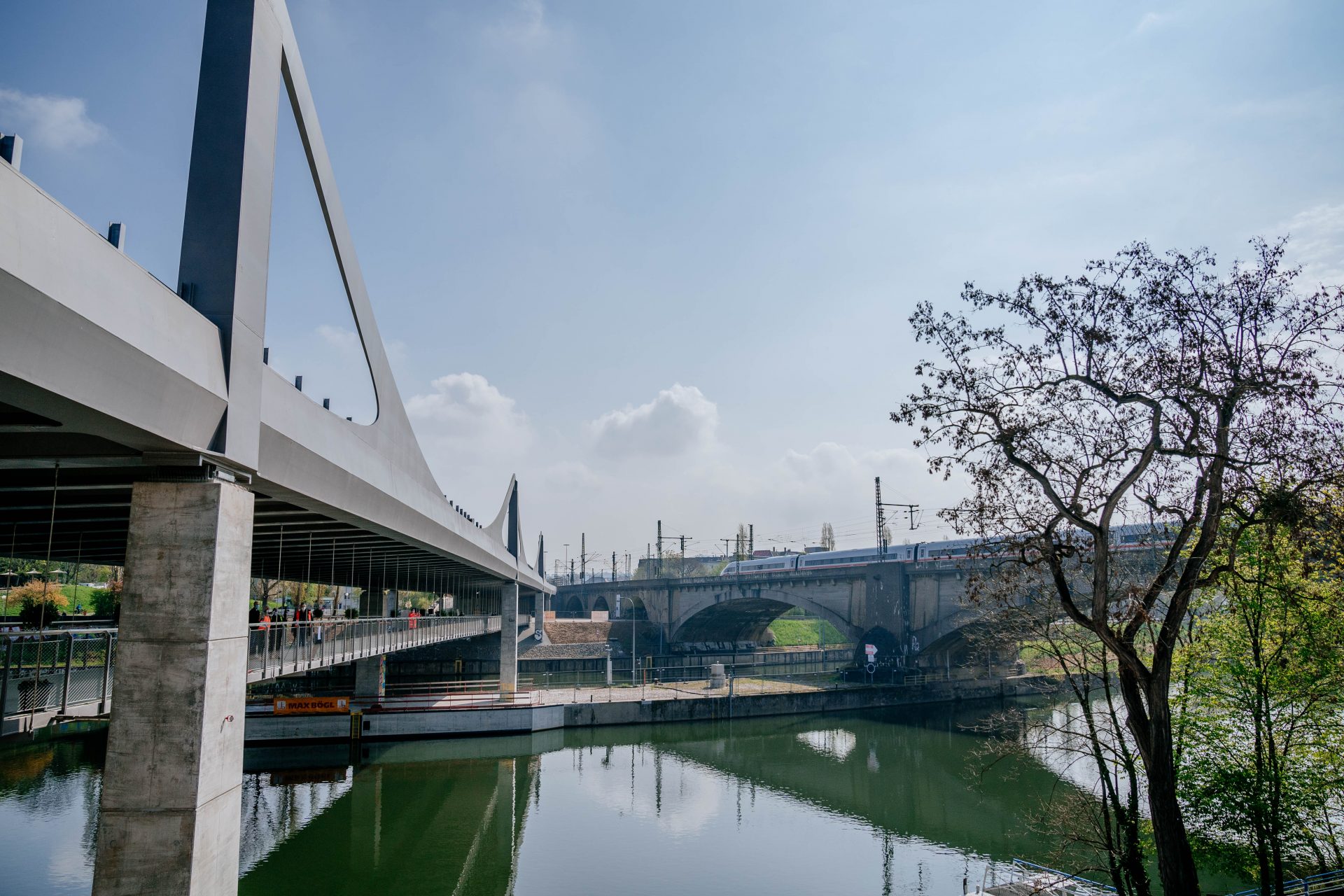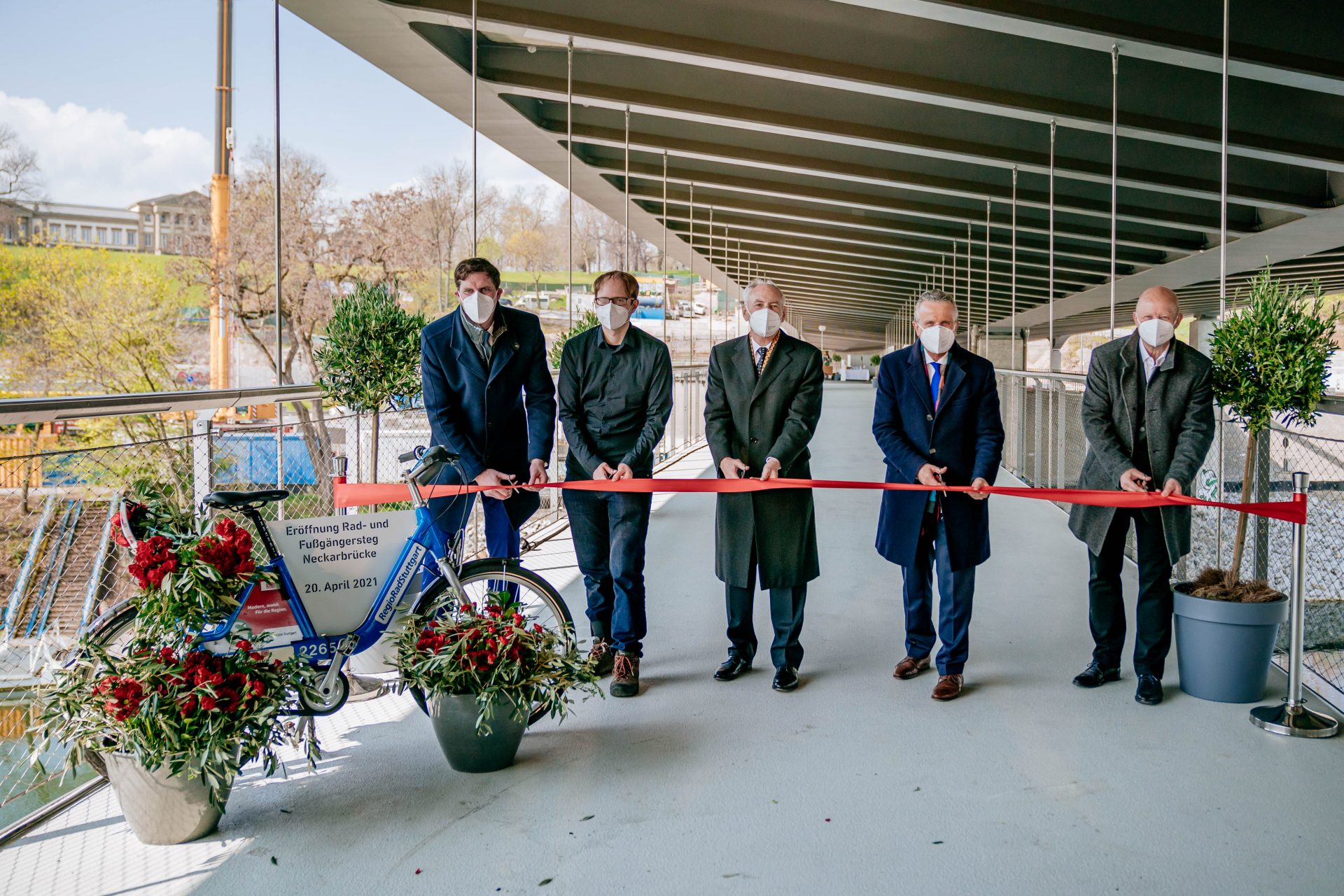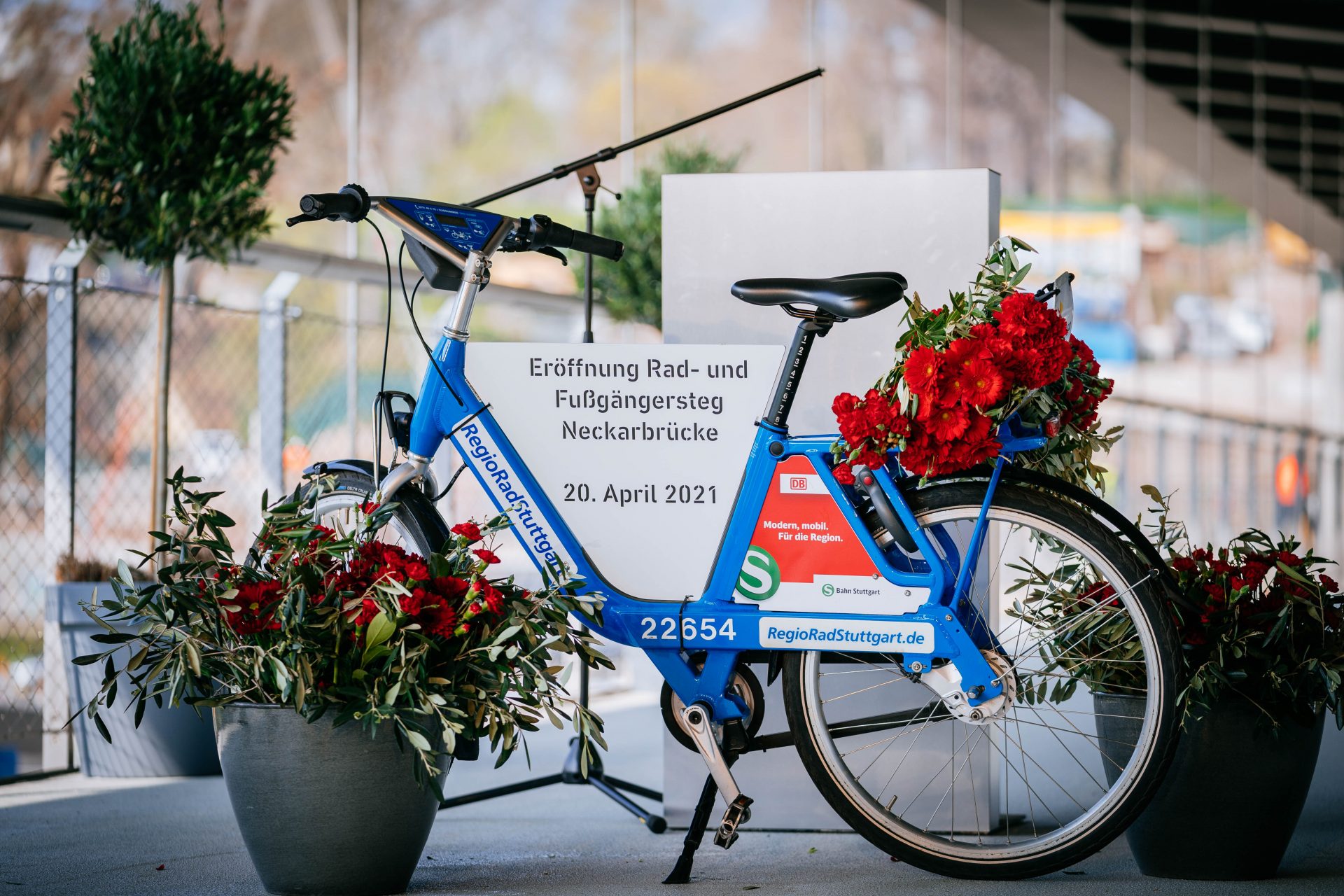News from 20.04.2021
Opening of Neckarsteg - S21 bridge crosses Neckar between Bad Cannstatt and Wilhelma / Rosensteinpark
The cycle path and pedestrian footbridge at Rosensteinpark creates an important and environmentally friendly connection between Stuttgart city center and Bad Cannstatt.
Clear the way for cyclists and pedestrians: The Stuttgart-UIm rail project association, together with representatives of the state capital, Deutsche Bahn, the construction company Max Bögl and the local ADFC cycling association, officially handed over the cycle and pedestrian footbridge suspended under the Neckar Bridge to its use on Tuesday, April 20, 2021. From now on, pedestrians and cyclists can reach the eastern bank near Wilhelma and Rosensteinpark from Bad Cannstatt and vice versa on the approximately 4.5-meter-wide and nearly 170-meter-long footbridge at a height of more than six meters above the Neckar River.
The structure attached to the new bridge is also a significant step forward for the state capital's bike path network. This is because the wooden footbridge previously located at this point was reserved exclusively for pedestrians. Moreover, after the new Staatsgalerie light rail stop in the city center, the footbridge is the next part of Stuttgart 21 that citizens can already use. Both are important and environmentally friendly new elements in the mix of the state capital's transportation services.
Bernhard Bauer, Chairman of the Stuttgart-Ulm Rail Project Association: "Stuttgart 21 is creating something new and literally building bridges. The Neckar Bridge with the new footbridge connects Stuttgart's oldest district, Bad Cannstatt, with what will in future be its newest: the Rosenstein Quarter, which would not be possible without S21. The architecturally successful footbridge is thus a further piece in the mosaic. It makes it visible and tangible that the citizens benefit from S21 beyond the future-oriented and efficient rail hub and the modern transportation hub at the airport."
Olaf Drescher, Chairman of the Management Board of DB Projekt Stuttgart-Ulm GmbH: "We are proud that we can hand over another piece of Stuttgart 21 to the public today with the bicycle and pedestrian bridge. DB is an environmental pioneer - only the bicycle is even more environmentally friendly. That's why it's a perfect fit that the footbridge makes the routes for cyclists in Stuttgart significantly shorter and more comfortable."
Dr. Frank Nopper, Lord Mayor of the state capital Stuttgart: "The striking Neckar Bridge and the footbridge hanging below it with its light and airy construction set new accents. This makes it possible for citizens to experience the Neckar in a special way. In addition, with the footbridge we are opening the first section of a new attractive connection for pedestrians and cyclists between Bad Cannstatt and Rosenstein Park. The second section across the B10 federal highway will follow in September."
Johann Bögl, partner of the Max Bögl Group: "Creating sustainable and environmentally friendly bridges for pedestrians, cyclists and the railroad, and doing so with such spectacular architecture as here at the Neckar Bridge, opens the heart of every civil engineer and makes one forget the countless challenges and efforts of such a construction. Great that we could be a part of this!"
Tobias Willerding, Chairman ADFC Kreisverband Stuttgart: "The route between Bad Cannstatt and Stuttgart city center is the most important bicycle connection in the whole of Stuttgart. The ADFC therefore expressly welcomes the new bridge for pedestrian and bicycle traffic. It is now important that the city of Stuttgart quickly creates an attractive connection to the Schlossgarten so that the bridge is also used a lot. In the medium term, a stand-alone high-speed bicycle connection between Bad Cannstatt and downtown Stuttgart is absolutely necessary to separate pedestrian and bicycle traffic."
Infoblock:
The opening of the bicycle and pedestrian walkway as part of the new, 345-meter long, cityscape-defining bridge at Rosensteinpark will create an important and environmentally friendly connection between Stuttgart's city center and Bad Cannstatt. The new Neckar Bridge is an important part of the future completely reorganized Stuttgart rail junction. Designed by the Stuttgart-based engineering firm Schlaich Bergermann und Partner, the approximately 25-meter-wide steel cable-stayed bridge was built using the incremental launching method; in the future, four railroad tracks for long-distance and local traffic will run across it.
Film and photo material for retrieval:
- Photos (Dropbox media material): bsu.link/opening-foot-bridge-Neckarbruecke
- Starting at 8 p.m., there will be a film from the opening on 4/20: bsu.link/Film-Opening-Fussgaengersteg-Neckarbruecke
- In advance: music video Neckarbrücke: bsu.link/musicvideo-neckarbruecke
- Webcam: bsu.link/webcam-neckarbruecke



